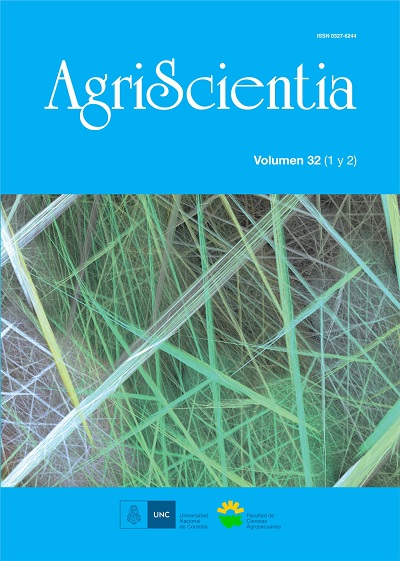Trend of NDVI in the period 2000-2014 as indicator of land degradation in Argentina: advantages and limitations
Main Article Content
Abstract
Land degradation is one of the main environmental concerns in Argentina. Monitoring systems to detect trend and provide early warnings are required to deal with this issue. Recently, there have been developed monitoring methodologies based on indices derived from satellite images, among them the most widely used is the NDVI (Normalized Difference Vegetation Index). The trend of NDVI (from MODIS sensor) was analyzed, between 2000-2014, as a possible indicator of land degradation in Argentina. For each year (from 01-July until 30-June of the following year) the annual integral of NDVI and its trend was calculated using simple linear regression for each pixel. According to the sign and statistical significance of the regression slope were mapped areas with negative trends (TN, 37.9% of the country), positive (TP, 5.0%) and no trend (57.1%). The TN was concentrated in North Patagonia (associated with the deposition of volcanic ash and a dry cycle) and the Chaco Seco (associated with forest clearing for agriculture and a dry cycle). The TP was concentrated in the northwest of the country (possibly associated with the occurrence of a wet cycle). This methodology, along with other indicators based on field information and climate data, may be useful for developing a monitoring system of land degradation at a national scale.
Article Details
How to Cite
Trend of NDVI in the period 2000-2014 as indicator of land degradation in Argentina: advantages and limitations. (2015). AgriScientia, 32(2), 83-93. https://doi.org/10.31047/1668.298x.v32.n2.16559
Issue
Section
Articles
How to Cite
Trend of NDVI in the period 2000-2014 as indicator of land degradation in Argentina: advantages and limitations. (2015). AgriScientia, 32(2), 83-93. https://doi.org/10.31047/1668.298x.v32.n2.16559





